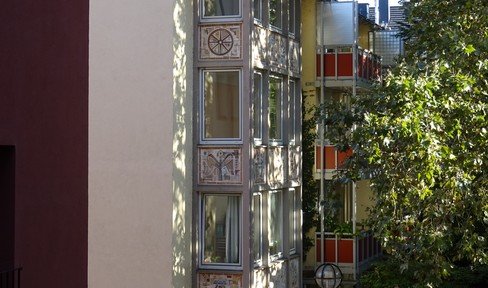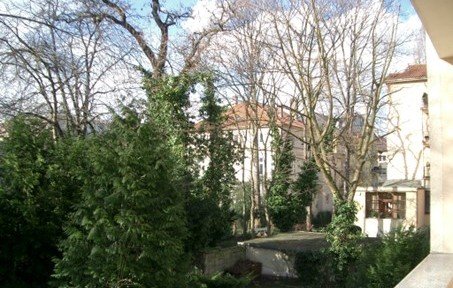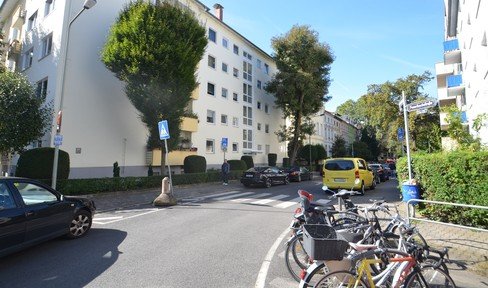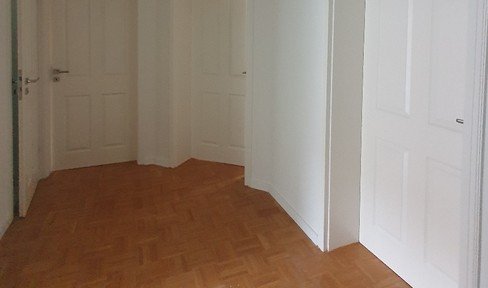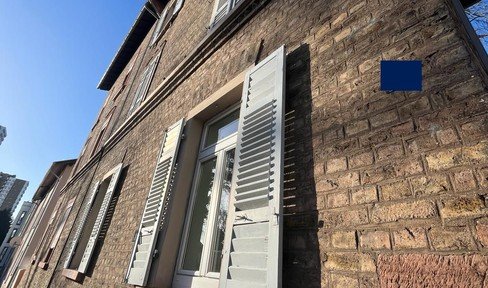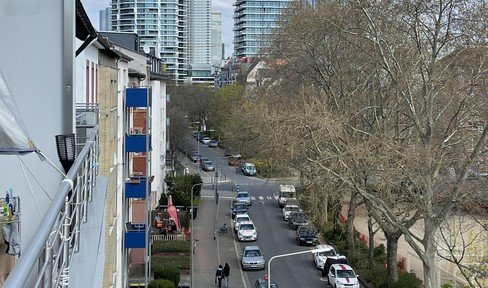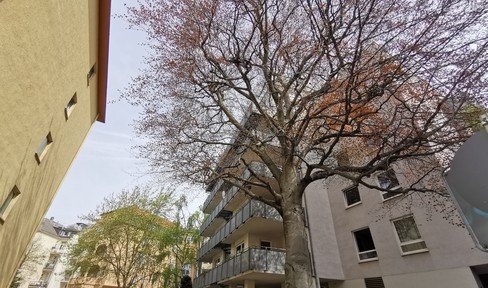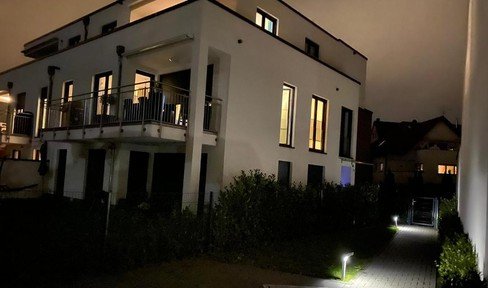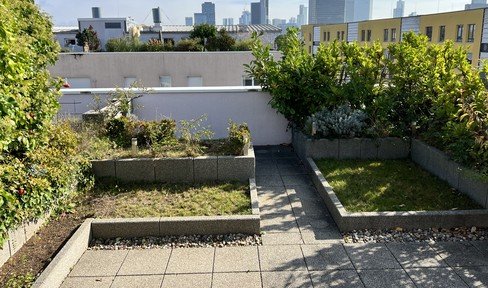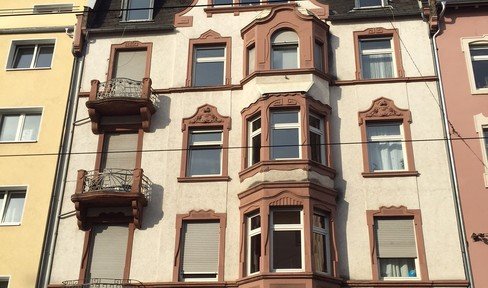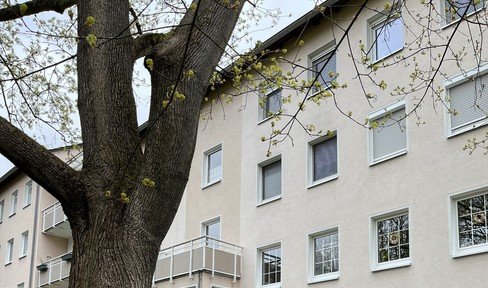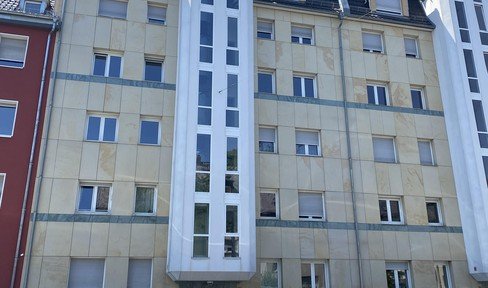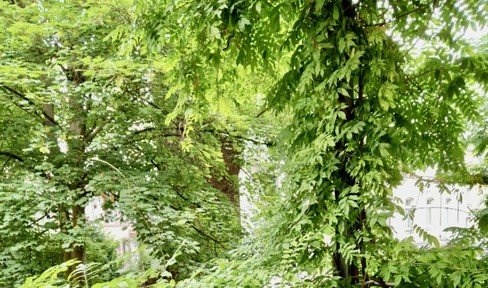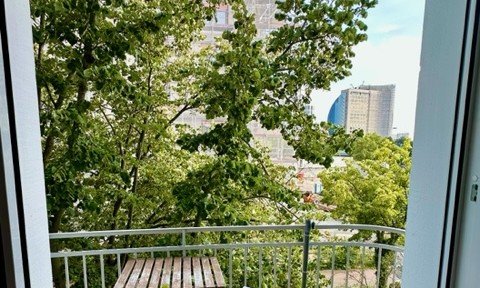- Properties
- Apartments for sale
- Hessen
- Frankfurt (Main)

This page was printed from:
https://www.ohne-makler.net/en/properties/apartment-buy/hessen/frankfurt-main/
Comission-free Apartments for sale in Frankfurt (Main)
Here you will find 59 offers for commission-free Apartments in Frankfurt (Main) and surroundings
A young, dynamic and growing city in the center of the Federal Republic.
The not quite exact geographical, but for centuries undisputed economic heart of Hesse has also been one of the most popular places of work, trade and residence in Germany for at least as long. Here, where the Romans made the impassable terrain of a swampy Main lowland near a natural bridge ("ford") assessable and cultivated it, an important city developed under Frankish, Salian and Saxon rule until the 15th century, which was also known nationwide for cloth trade and large fairs. In modern times, Frankfurt became even more international, and trade and commerce grew stronger under the influence of Dutch emigrants. Its important role as a forerunner of the revolution in the Vormärz period ended only with the last session of the first German parliament in the Paulskirche on May 31, 1849. During the German Empire from 1871 and the subsequent Wilhelminian period, its importance as a trading city and industrial center was consolidated. New districts such as the Gallus and Gutleutviertel train stations and the West, North and East Ends were created or incorporated, such as Bornheim and Bockenheim. The concept of the so-called "New Frankfurt" became groundbreaking for urban German housing construction between 1925 and 1930. Residential areas that are still in demand today were built, such as the estates in Praunheim (Westehausen), Dornbusch-Ost, Sindlingen, Sachsenhausen-Nord (Heimatsiedlung I and II), Heddernheim (Römerstadt), Ginnheim (Höhenblick), Oberrad (Tellersiedlung), Bruchfeldstraße and on the Bornheimer Hang. After the Second World War, which was also devastating for Frankfurt, there was an acute housing shortage; from the 1950s to the 1970s, for example, the Adolf-Miersch-Siedlung (Niederrad), the An den Röthen settlement (Bornheim), the Anne-Frank-Siedlung (Eschersheim) and the Berkersheimer Weg settlement (Frankfurter Berg)were built.
Frankfurt's urban and housing development: past, present and future
In order to accommodate the steadily increasing population of currently almost 700,000, the large residential areas Atzelbergsiedlung (Seckbach), Bonames-Nord, Siedlung Dietesheimer Straße (Fechenheim), Eberhard-Wildermuth-Siedlung (Griesheim), Engelsruhe (Unterliederbach), Goldstein-Süd (Schwanheim), Siedlung Langweidenstraße (Hausen), Märchensiedlung (Zeilsheim), Nordweststadt (Niederursel), and Riederwald were also built until around 1980. The largest construction projects in Frankfurt am Main currently include the Alleeviertel on Peter-Fischer-Allee on the site of Victor-Gollancz-Haus in Höchst, which was started in 2001, and the new Frankfurt-Riedberg neighborhood, which was launched at the same time and comprises the Riedberg Westflügel, Altkönigblick, Mitte, Universität, Mitte, Ginsterhöhe and Bonifatiusbrunnen neighborhoods. The Niederrad office district, which has been partially converted into a residential area since 2009, the 72-hectare new development area Frankfurter Bogen in Preungesheim, where construction has been underway since 1999, the "Gateway Gardens" conversion area near the airport, which has been newly developed since 2008, and above all the Europaviertel on the former main freight station in Gallus, which will one day provide living space for 8,000 to 10,000 people, are also important new residential areas in the city, which remains attractive because of its economic strength. Also not to be forgotten are the Rebstockpark in Bockenheim, which has been under construction since 2002 and provides housing for around 4,500 people, and the Mertonviertel office and residential district in Heddernheim and Niederursel, where around 1,800 new residential units for around 4,500 people had also been built by the end of 2012.
Many new construction and redevelopment areas, but mostly with higher purchase prices
With its current average apartment price of around 4,200 euros/m², Frankfurt am Main is roughly on a par with cities such as Düsseldorf, Hamburg and Stuttgart, but as there, condominiums in high-demand areas can easily cost up to 6,000 euros/m² and considerably more. Above average are areas such as the Alt- and Innenstadt, Bornheim, Griesheim, Sachsenhausen-Süd and Nord, Westend-Süd and Nord, the Bahnhofsviertel, Bockenheim, Ostend and Nordend-Ost and West, with purchase prices ranging from around 4,500 to just under 6,000 euros/m². Prices below 4,000 euros/m² can still be found in isolated cases in Berkersheim, Riedberg, Hausen, Rödelheim, Seckbach, Bergen-Enkheim, Eschersheim, Ginnheim, Höchst, Niederrad and Praunheim. By Frankfurt standards, some surprisingly low-priced offers between 2,000 and 3,000 euros/m² can be found in Fechenheim, Niederursel, Oberrad, Nied and Bonames, but these are often apartments with a simple structure and/or in need of major renovation or refurbishment. In the opinion of most observers and experts from the real estate sector, the situation on the Frankfurt housing market, which has been tight for several years now with strong demand and few favorable offers, will probably change little in the future. Although planned prestige properties, some of which are already under construction, such as the 7,000 m² Dom-Römer site on the site of the demolished technical city hall or the over 100,000 m² MainTor site on Untermainkai are definitely of interest to investors with purchasing power, normal earners with lower budgets are unlikely to get their money's worth there. The other urban redevelopment and new construction areas, such as the redevelopment of the Ruhrorter Werft in Ostend and Nordweststadt in Niederursel, the projects south of Rödelheimer Landstrasse in Bockenheim and north of Dieburger Strasse in Fechenheim, will also not necessarily have all that affordable condominiums due to the high standards aimed for there in each case. However, private owner-occupiers and capital investors still have favorable opportunities in areas such as Harheim, Praunheim, Griesheim, Nied, Sossenheim or Bonames, which have so far developed only leisurely.
Information on buying an apartment in Frankfurt am Main:
- Frankfurt is already since the Middle Ages an important German commercial stronghold
- by many resident enterprises strong demand for dwelling prevails
- the purchase price in on up-to-date on the average over 4,000 euro/m ² risen
- in central situations however up to over 6.000 euros/m² are demanded and paid
- Until 2020, 6,000 residential units for up to 15,000 inhabitants will be built in Riedberg
- The new central residential areas are based on the current top prices
- Favorable opportunities are still offered to some extent in Frankfurt's east and west.
Diese Seite wurde ausgedruckt von:
https://www.ohne-makler.net/en/properties/apartment-buy/hessen/frankfurt-main/
